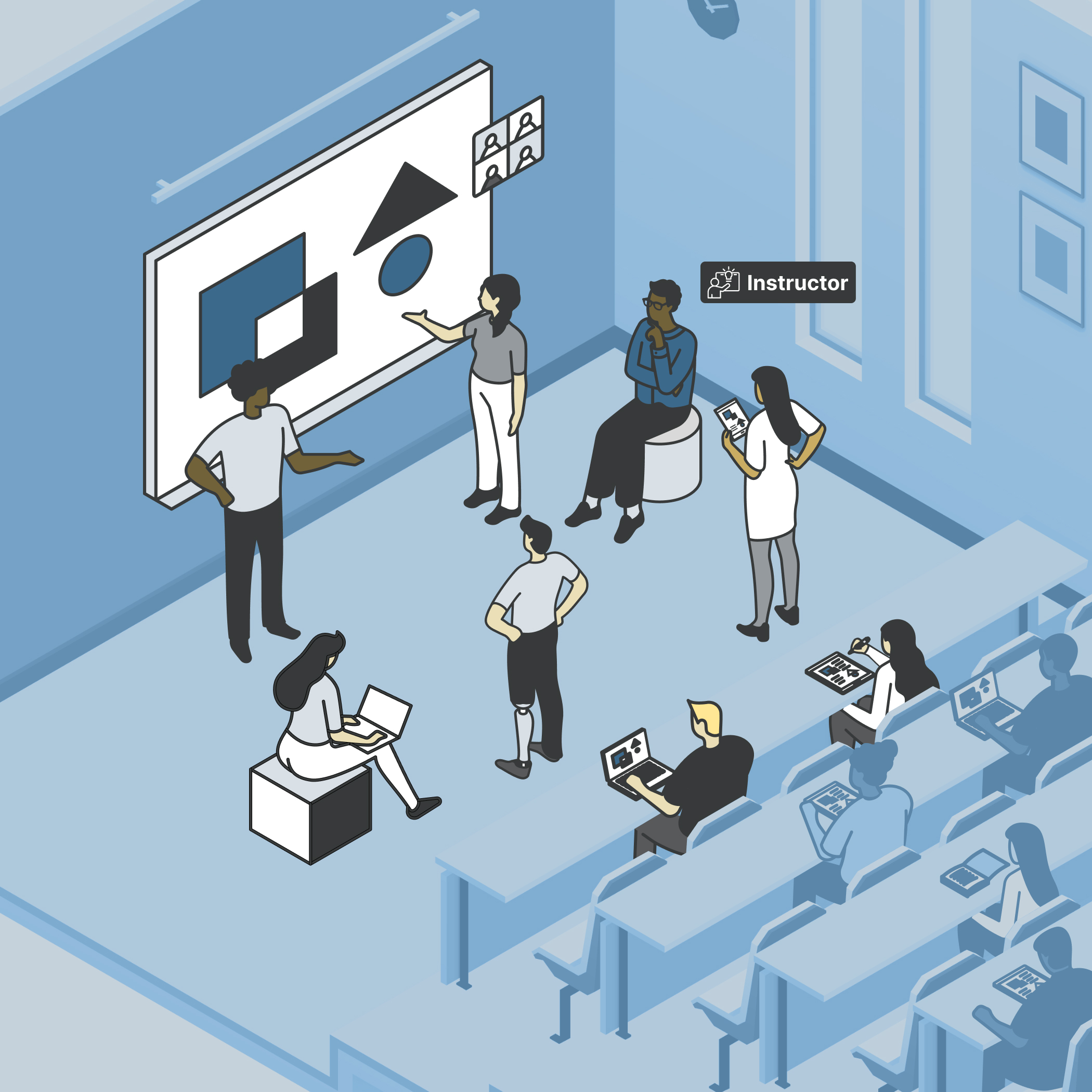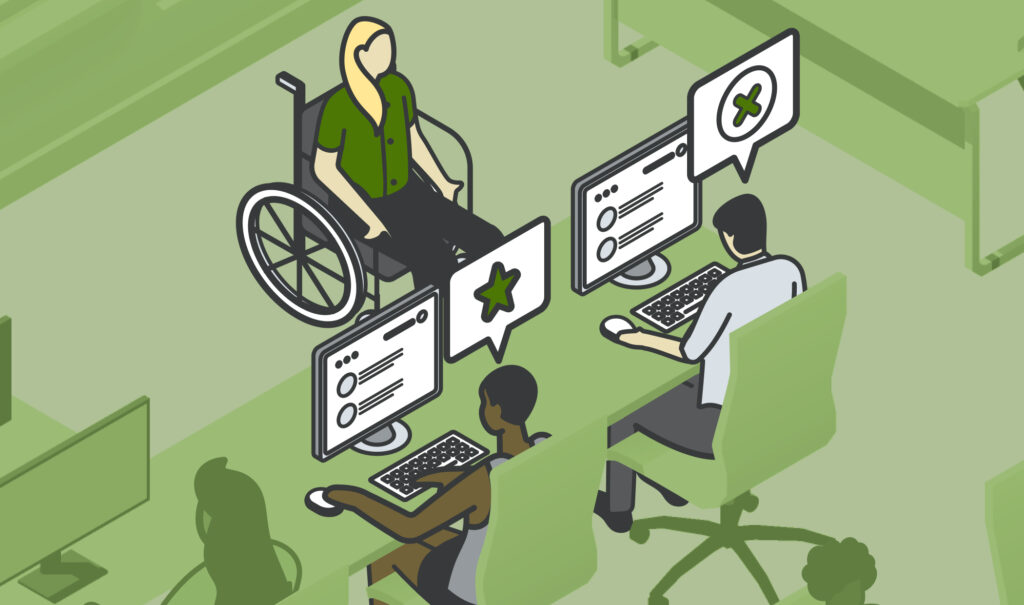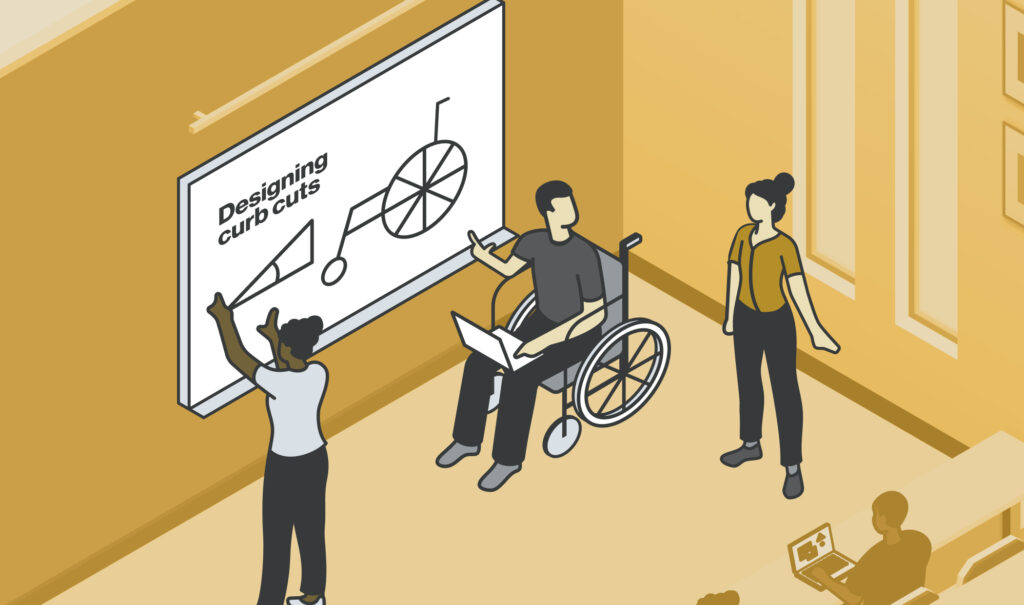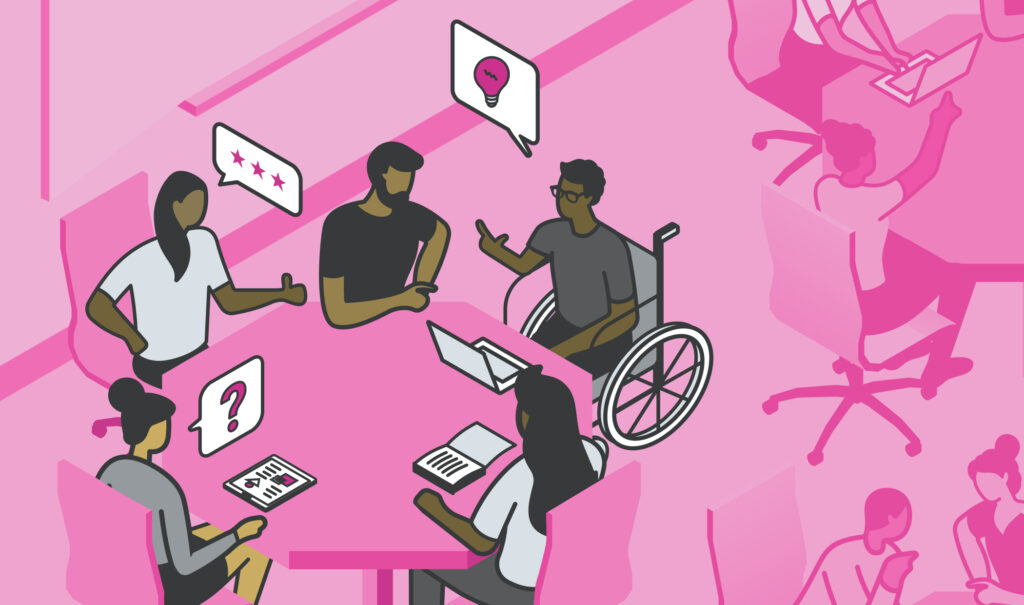Digitally-Enabled, Evidence-Based Teaching Practices
Welcome to the hub for Digitally-Enabled Teaching & Learning. Digitally-Enabled Teaching & Learning is a mechanism for improving equity and the learning experience across U.S.-based postsecondary institutions. Here you will find resources and best practices across pedagogy, curriculum, and technology as well as a growing body of evidence to support the use of technology in the classroom to support learning for all students.
Digitally-enabled, evidence-based teaching practices refer to instructional approaches that integrate technology tools and platforms to enhance and support teaching methods grounded in empirical research and data-driven insights. These practices leverage technology to collect, analyze, and apply evidence to inform and improve the effectiveness of teaching strategies, ultimately leading to more successful learning outcomes for students.
The goal of this site, in addition to being a hub for instructional examples, is to engage with the academic community. We hope to receive feedback on these practices, source further examples of how they are supported by technology and are implemented in courses throughout the U.S., and work together to build a community around teaching and learning. Thank you for helping us support the field.
How to use
Start anywhere
These practices are not sequential. You can start anywhere.
Take small steps
Practices do not need to be implemented in full to make positive change.
Different practices drive different outcomes
Implementing different practices will help you reach specific teaching and learning goals.
Choose a practice
Impact on Teaching & Learning Goals
Implementing different practices will help you reach specific teaching and learning goals. Here we explore five goal areas, sequenced based on how one may lead into the next in the student learning journey.
Choosing where to start depends upon your goals, the needs of your students, and your capacity for implementation.
Learning Environment
Learning Environment is defined as the culture and context of your course and measured by students’ sense of belonging and ability to achieve any of the other goals. To improve the learning environment, consider incorporating the following practices in your classroom:
Motivation
Motivation is a summary of the reason(s) students choose to invest time and energy into assignments. To improve motivation, consider incorporating the following practices in your classroom:
Engagement
Engagement is defined and measured by meaningful contact students make with instructional events or activities. To improve student engagement, consider incorporating the following practices in your classroom:
Persistence
Persistence, simply put, is engagement over time. To improve students’ persistence, consider incorporating the following practices in your classroom:
Learning
Learning is the acquisition of new knowledge that can be applied via recognition or recall or in real-time interactions. All eight of the digitally-enabled, evidence-based teaching practices defined on this site will make a positive difference for student learning:
Instructional Examples
The Instructional Example Library features a wide range of digitally-enabled examples sourced directly from instructors who are using technology to implement evidence-based teaching practices in their courses. These examples focus primarily on math, chemistry, and statistics gateway courses, but are applicable across disciplines.
Have an Example of Your Own?
Help us build our Instructional Example Library! We are looking for contributions from higher education instructors across disciplines who use technology to enable evidence-based teaching practices. To learn more and to submit an example, please visit the form page linked below. Thank you for helping us support the field.

Join the Transform Learning Community of Practice
Join us this Fall for the Transform Learning Community of Practice, an 8-week learning community for Math faculty. Participants will engage in synchronous and asynchronous discussions on the eight digitally-enabled, evidence-based teaching practices, share insights and experiences, and learn from math faculty peers. Participants are eligible for a stipend upon completion of the community of practice.
Research & Resources
The following research, resources, and organizations are foundational to the framing of our digitally-enabled, evidence-based teaching practices strategy as a whole. You will find additional resources across the site that are specific to certain topics or components of the strategy. This section of links and files is in-progress and will grow as the site is updated.
- The National Academies of Sciences, Engineering, and Medicine’s Transforming Undergraduate STEM Education: Supporting Equitable and Effective Teaching report offers a comprehensive framework for strengthening undergraduate STEM instruction with actionable strategies available for implementing both the digitally-enabled, evidence-based teaching practices and the seven NASEM principles.
- The EBTC’s Equity-Based Teaching in Higher Education: The Levers that Institutions Can Use for Scaling Improvement Report identifies policies, programs, and practices for EBT improvement for different actors in the educational ecosystem highlighting 15 recommendations across five stakeholders.







